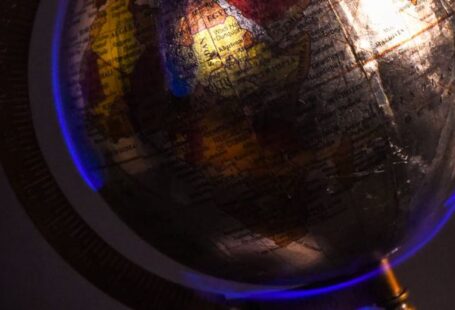In today’s technologically advanced world, where GPS systems and satellite navigation dominate the field of navigation, one might wonder what role sextants, a tool from the past, play in modern-day navigation. Surprisingly, sextants still hold a significant place in navigation practices, especially in certain situations where traditional methods are required or as a backup to electronic systems. Let’s delve into the world of sextants and explore their relevance in contemporary navigation.
**The Basics of Sextants**
A sextant is a navigational tool used to measure the angle between two objects, typically the horizon and a celestial body such as the sun, moon, or stars. This angle, known as the altitude, helps determine the observer’s position on Earth. The sextant’s design consists of a frame, an index arm, a telescope, and a series of mirrors that enable users to align the celestial body with the horizon accurately.
**Sextants in Emergency Situations**
While GPS technology has revolutionized navigation, relying solely on electronic systems can be risky due to potential failures or malfunctions. In emergency situations where GPS is unavailable or compromised, sextants serve as a reliable backup for determining one’s position. Mariners, aviators, and adventurers often carry sextants as a precautionary measure, ensuring they can navigate even in the absence of advanced technology.
**Celestial Navigation with Sextants**
Celestial navigation, the practice of using celestial bodies to determine one’s position on Earth, remains a crucial skill for mariners and aviators. Sextants play a vital role in celestial navigation by allowing navigators to measure the altitude of celestial bodies accurately. By referencing nautical almanacs and tables, navigators can calculate their position based on the observed celestial body and its known position in the sky at a specific time.
**Educational and Historical Significance**
Apart from practical applications, sextants hold educational and historical significance. Learning to use a sextant and practicing celestial navigation provides insight into the traditional methods of seafaring and exploration. Many maritime schools and institutions include sextant training in their curriculum to ensure that navigators have a comprehensive understanding of both modern and traditional navigation techniques.
**Precision and Accuracy**
One of the key advantages of sextants is their precision and accuracy in determining position. While electronic systems can be prone to errors or interference, sextants offer a manual method that is not reliant on external factors. By carefully aligning the sextant with celestial bodies and using proper calibration techniques, navigators can achieve highly accurate position fixes, essential for safe and successful navigation.
**The Role of Sextants in Nautical Competitions**
Sextants also play a role in nautical competitions and challenges that emphasize traditional navigation skills. Events such as ocean races or regattas sometimes include segments where participants must rely solely on celestial navigation techniques, including the use of sextants. These competitions not only showcase the importance of traditional navigation methods but also honor the legacy of sailors and explorers who navigated the world’s oceans using similar tools.
**Conclusion: The Enduring Legacy of Sextants**
In conclusion, while modern technology has revolutionized navigation, sextants continue to hold a significant place in contemporary practices. Whether as a backup in emergencies, a tool for celestial navigation, or a symbol of traditional seafaring skills, sextants remain relevant in today’s world. Their precision, reliability, and historical significance make them an essential part of navigation, reminding us of the enduring legacy of traditional methods in a technology-driven era. Embracing the past while embracing the future, sextants bridge the gap between old and new, ensuring that navigators are equipped with diverse skills to navigate the vast expanses of land and sea.





